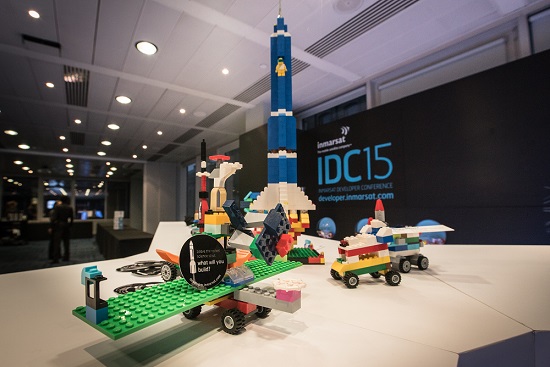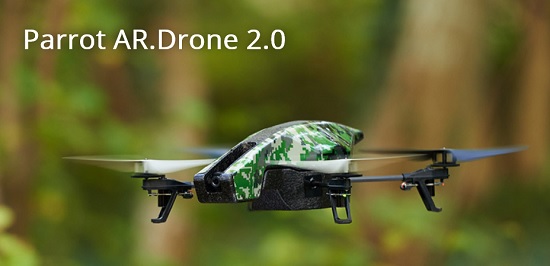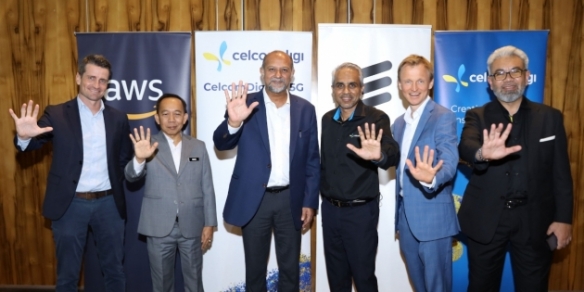Inmarsat opens up platform, seeks more APAC developers
By Gabey Goh July 15, 2015
- Wider trends have forced the satellite communications industry to open its doors
- Enables delivery of products and services that better meet customer needs

IT was a milestone moment for Inmarsat when more than 350 attended its Inmarsat Developer Conference in London at the start of the year.
The conference formed the vanguard of the satellite communications services provider’s new technology strategy, which saw it open up its platforms to developers.
The company’s verticals – Maritime, Enterprise, Aviation and Government – featured heavily during the three-day event, with experts highlighting the biggest growth areas for satellite communications within each specialist sector, helping developers pinpoint the best ways to utilise Inmarsat’s open technologies.
“Historically, Inmarsat has worked with a small group of specialist satellite communications industry developers,” its chief technology officer Michele Franci (pic above) told Digital News Asia (DNA) via email.
He said this relatively closed community prospered and served the needs of the customer base well, but in the last 10 years, the communications industry as a whole has been undergoing great shifts.
A number of wider trends have both forced and enabled the satellite communications industry to open its doors.
Another driver behind the company’s decision to open up its technology platform is the acknowledgement that there is a huge worldwide developer community with deep knowledge of local markets, looking for new opportunities.
“We are being approached by developers who have never worked in satellite before and who want to understand the dynamics of the satellite communications industry and how they can bring their innovative solutions to our customers and partners,” Franci said.
Inmarsat’s technologies, he claimed, while still containing cutting-edge innovation, are also mature enough to be rationalised into a stable set of APIs (application programming interfaces) and core modules that can be easily integrated by partners to enable seamless integration with their own solutions.
In addition, the company will continue to invest in a technology toolkit and commercial frameworks that would enable a more diverse group of developers to work with its infrastructure.
Inmarsat does not charge developers for becoming a Certified Application Partner or publishing their applications through its platform. Developers can test out the Inmarsat APIs for free through a ‘sandbox’ environment, and are charged on a per use basis in a live production environment.
Franci said that this developer enablement expenditure is in addition to the baseline investment that Inmarsat has committed to its satellite and service infrastructure.
“Inmarsat is providing a technology enabler toolkit of core modules and APIs because we want our developers and distribution partners to show us where the markets are.
“We are putting a toolkit in their hands that allows easier, faster, lower cost – overall more agile – development of Inmarsat communications equipment and services than ever before.
“By partnering with developers who have market proximity, this toolkit will enable the delivery of products and services that better meet end-customers’ needs, addressing new requirements and creating products and services for markets that we could not easily access,” he added.
Franci admitted that cultural change, in addition to numerous technology challenges, was a significant consideration in the company’s shift to an open technology approach.
“Not just within Inmarsat as an organisation, but within our whole ecosystem. Inevitably, when moving from a relatively closed community of developers to one that is more open, some of our existing community can feel under threat of competition.
“In fact, what we are observing is that the existing community benefits from the growth too.
“These organisations, which form the core of our long-term developer relationships, still remain at that core going forward, and as time goes on will have a larger pool of partners to collaborate and innovate with.
“It requires us all to be more agile and open to opportunities – and that’s exciting,” he added.
Opportunities and gaps

Asked about growth areas for satellite communications, which was a focus area at the Inmarsat Developer Conference, Franci said that one area of opportunity was the ‘Internet of Everywhere.’
“The continuing drive for truly ubiquitous connectivity globally causes the satellite industry to be in more demand than ever, as both infill communications for standard terrestrial communications and as a robust connectivity solution for people and things,” he said.
Infill refers to filling in the gaps in communications.
The emerging area of Machine-to-Machine (M2M) communications, especially, is slated for rapid growth, Franci said.
“This is seeing a great deal of interest and developers will be able to offer smaller lower-cost devices connected to our networks. The M2M technology toolkit being developed by Inmarsat is perfect for this market,” he added.
MarketsandMarkets reports that the global M2M satellite communication market is expected to grow from US$2.98 billion in 2014 to US$4.7 billion by 2019, at an estimated compound annual growth rate (CAGR) of 9.8% in that timeframe.
The research firm noted that increasing data communication needs, rising M2M applications, and fast return on investments are leading to the creation of more avenues for the M2M satellite market.
Another trend is the continued adoption of smart personal devices, creating a thirst for connectivity and media consumption.
The content delivery space is also seeing a lot of activity, with Franci highlighting opportunities for providing digital content to ships and aircraft “in a big way.”
“We are seeing a demand for lower-cost smartphone companion devices and content delivery to ‘remote communities’ – whether they are aboard vessels in the middle of the ocean, aircraft flying at 35,000 feet, or people on the ground who otherwise cannot get connected,” he added.
Franci said Inmarsat’s APIs on the Global Xpress network will enable developers to deliver content more easily and cost effectively through the company’s use of multicasting and managed delivery solutions.
“Delivery of larger digital files will be easier, more cost-effective and faster using our Global Xpress network and Content Prepositioning API.
“Satellites can act as one of the many communications service conduits for this need. Inmarsat is responding to this need from the personal device IsatHub to its planned European Aviation service that will allow passengers to access high-speed connectivity in flight,” he added.
Startup push

Franci also highlighted a couple of innovations leveraging on the company’s platform, such as France-based Parrot (pic above), a manufacturer of drones that has integrated with Inmarsat’s networks to enable live video streaming.
“The result of this integration is great quality live-streamed aerial footage, with applications for this ranging from live media coverage through to search-and-rescue in the remotest regions of the Earth,” he declared.
READ ALSO: Garuda Robotics out to derive insights from drone feeds
The company has also recently been working with some startups, one of which has developed a platform for ship owners and operators.
“The Maritrace application not only enables tracking of vessels around the world, but also integrates a wide range of data sources that can be used for safety planning, routing, geo-fencing and asset tracking,” Franci said.
Inmarsat has 11 satellites currently in orbit, with five covering the Asia Pacific region, offering both L-band and Ka-band services. And with its developer outreach efforts underway, there are several hundred applications in various stages of development.
“Currently, we are actively engaged with companies which are building innovative products and applications in Australia, Singapore and Japan; and our activity with companies in China in recent years has increased significantly,” said Franci.
The company hopes to continue and grow the momentum at its second developer conference slated to take place in late February 2016, with a target of more than 500 attendees and the hope that some of this increase comes from the Asia Pacific region.
“The first Inmarsat Developer Conference was an exciting event, with great attendance and representation from Asia Pacific with key attendees from Singapore, China, Japan and Australia,” said Franci.
“However, most of the organisations that attended were quite large in size and we believe that we missed out on the smaller innovative developer organisations – of which there are many in the region.
“We will be reaching out to these organisations locally, and also encouraging a strong Asia Pacific presence for next year,” he added.
Related Stories:
APIs: The power of openness
Philippines typhoon: Tech companies pitch in
Malaysia’s TSGN in satcom boost to provide broadband across Asean
e2v image sensors launched into space with Vietnam’s Earth observation satellite
For more technology news and the latest updates, follow us on Twitter, LinkedIn or Like us on Facebook.


